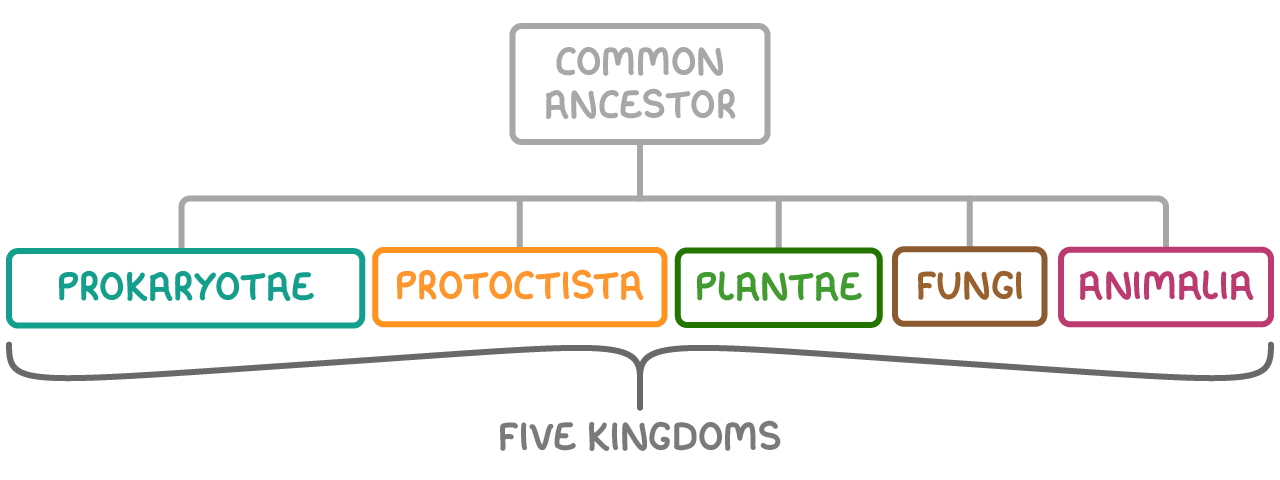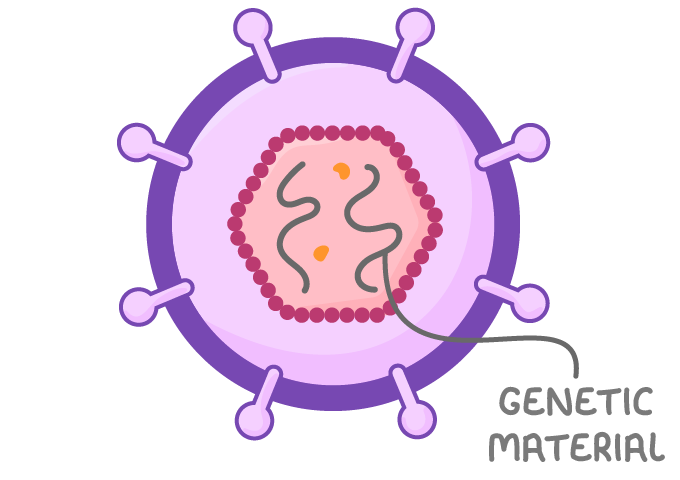Taxonomy
This lesson covers:
- The purpose of classification
- The hierarchical taxonomic system
- Binomial nomenclature
- The five kingdom classification system
- The three domain classification system
- Classification of viruses
The species concept and the purpose of classification
There are a few different ways a species can be classified:
- Biological species concept - This defines a species as a group of organisms that can reproduce to produce fertile offspring.
- Morphological species concept - This classifies species based on observable physical traits.
- Ecological species concept - This defines a species by its ecological niche, which is the way it interacts with its environment.
Classification organises organisms into groups based on similarities.
This allows scientists to:
- Identify new species.
- Study evolutionary relationships.
- Understand shared traits and adaptations.
This hierarchical system from general to specific makes research and identification more manageable across the millions of global species.
The hierarchical taxonomic system
There are eight major taxonomic ranks used to classify organisms.
Ranked from largest and broadest to smallest and most specific, these are:
- Domain
- Kingdom
- Phylum
- Class
- Order
- Family
- Genus
- Species
The broadest groups contain the most species, and narrower groups have fewer species but are more closely related.
Using binomial nomenclature
The binomial naming system gives each species a two-part ‘binomial’ Latin name. This binomial name is italicised when typed and underlined when written down.
The name consists of:
- The genus - This has an uppercase first letter.
- The species - This is all lowercase.
For example:
- The binomial name for humans is Homo sapiens.
- The binomial name for dogs is Canis familiaris.
This avoids confusion from regional common names for organisms.
The five kingdom system
We generally classify organisms into five different kingdoms.

| Plantae | Animalia | Prokaryotae | Protocista | Fungi | |
|---|---|---|---|---|---|
| Cell type | Eukaryotic | Eukaryotic | Prokaryotic | Eukaryotic | Eukaryotic |
| Cellular organisation | Multicellular | Multicellular | Unicellular | Unicellular or simple multicellular | Unicellular or multicellular, with a body made of hyphae |
| Nucleus and other membrane-bound organelles | Present, including chloroplasts | Present, no chloroplasts | Absent | Present, sometimes including chloroplasts | Present, no chloroplasts |
| Cell walls | Yes, made of cellulose | None | Yes, often made of peptidoglycan | Variable | Yes, made of chitin |
| Nutrition | Autotrophic (photosynthetic) | Heterotrophic | Autotrophic, heterotrophic, or parasitic | Autotrophic, heterotrophic, or parasitic | Saprophytic, absorb dissolved organic nutrients from dead matter |
| Storage of sugars | Starch | Glycogen | Glycogen | Variable | Glycogen |
| Reproduction | Use seeds or spores | Variable | Binary fission | Variable | Spores |
The three domain system
Older classification systems become outdated when new molecular and genetic data arise. This means that taxonomy is periodically updated and reorganised to reflect progressing scientific knowledge, as reflected by the new three domain system.


The three domain system proposes six kingdoms instead of five, because there is evidence for splitting the kingdom Prokaryotae into two separate kingdoms: Eubacteria and Archaebacteria. It recognises differences between Bacteria, Archaea, and Eukarya (all eukaryotic organisms).
Domain Bacteria
- Contains the kingdom Eubacteria only, found in all environments.
- Prokaryotic unicellular organisms.
- Distinct cell membrane lipids.
- Have peptidogylcan (murein) in their cell walls.
- Unique RNA polymerase enzyme.
Domain Archaea
- Contains the kingdom Archaebacteria only, typically found in extreme environments.
- Prokaryotic unicellular organisms.
- Have histones so gene and protein synthesis is more similar to Eukarya than Bacteria.
- No peptidogylcan in their cell walls.
- Different cell membranes that contain fatty acids bound to glycerol by ether linkages.
- Have a more complex form of RNA polymerase than Bacteria.
Domain Eukarya
- Contains four kingdoms from the five kingdom system: Animalia, Plantae, Fungi, Protoctista.
- All have nuclei and membrane-bound organelles.
Classification of viruses

Viruses are classified by:
- The type of nucleic acid (RNA or DNA).
- Whether the genetic material is single stranded or double stranded.